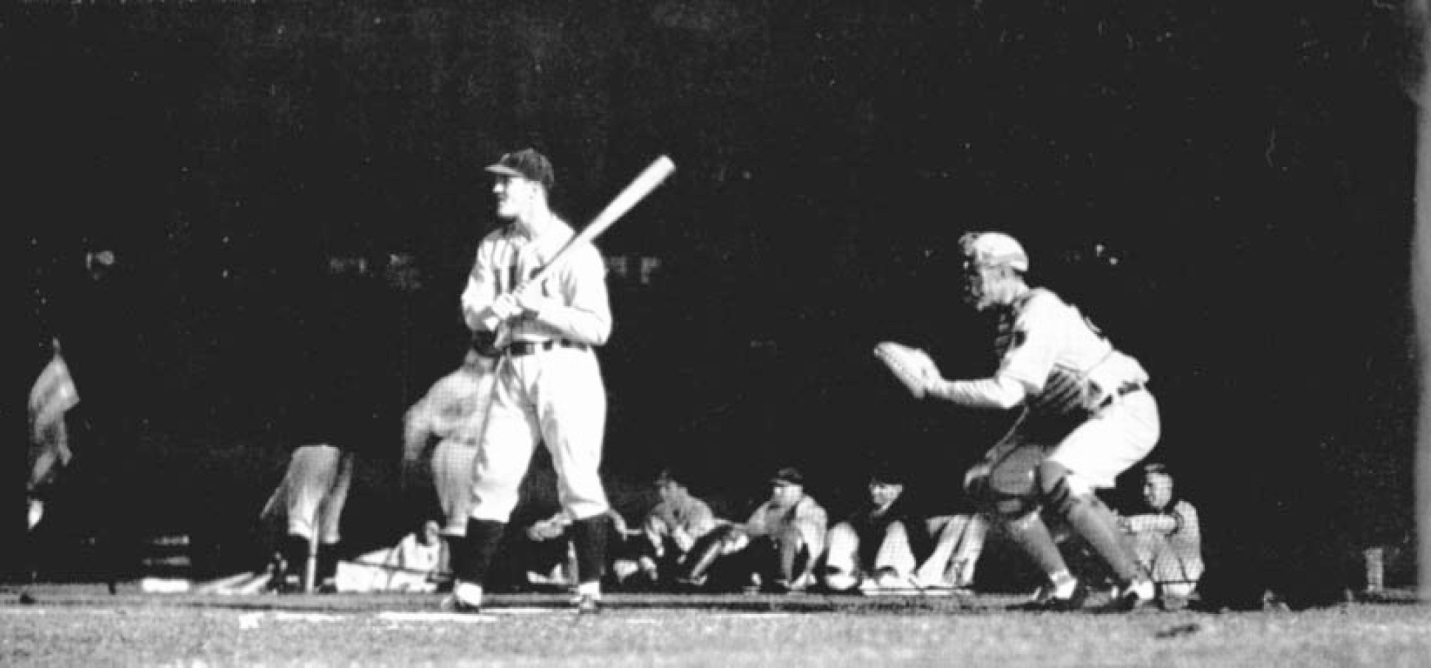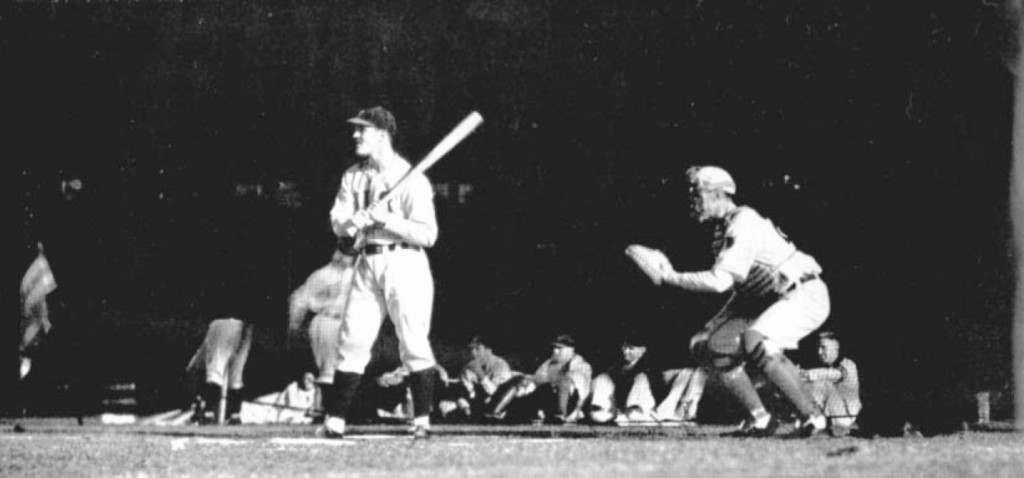Historical Hitter August 12 1936: Bill Shaw

Batter up at the Berlin Olympic Games, 1936. The batter is unknown in this image.
On this day in front of more than 90,000 fans, Hubert Shaw of the US team hit a first inning inside the park home run. This hit is significant as the hit of the day because it was accomplished in the controversial 1936 Olympics in Berlin, Germany.
Shaw was a collegiate first baseman from remote Bowdin College in Maine. He did not play in either the minors or majors, so this game was Bill Shaw’s fifteen minutes of baseball and Olympic fame.
The game was a novelty to the Olympic Games and to the German audience with the announcers giving both play by play and descriptions in German. The Official program of the games described baseball as “…the almost unknown sport of baseball.” To help the fans understand the game basic rules were outlined in the game program and a running commentary heard through the stadium. One player remarked later.
“Then there was an announcement in German that . . . hitting a home run was a big deal. So, everybody cheered.”
The official program also contains excerpts of the rules of play for baseball which must have been written by someone who has never seen a baseball game. Below is how a strike out is described in the XIth Olympic Games Berlin, 1936 Official Report, Volume II:
The player who is to bat takes his place at the side of the “home plate” and attempts to hit the balls thrown across the plate by the opposing pitcher. He is given three trials and should he fail to hit the ball he is “out” and the next player follows at bat.
The Olympic stadium venue was the site of the make-shift field laid out inside the track made famous by Jessie Owens. There was no pitching mound and the infield was all grass. The game was also played at night. The official German record stated that the field was illuminated brightly, while the American report noted that the field was so poorly light that pitchers slowed down their offerings to batting practice speed.
The game was a seven inning exhibition with two teams; “US Olympics,” and the “world Champions.” In fact both teams were Americans who were selected in an open tryout in Baltimore Maryland. While the Babe endorsed the tryouts as a means of generating excitement, the participation in the US Olympic Baseball Exhibition team was contingent on the players footing their own travel expenses of 500 dollars.
The official line score is as follows from Baseball-reference.com:
| Team | 1 | 2 | 3 | 4 | 5 | 6 | 7 | R | H | E |
| U. S. Olympics | 2 | 0 | 0 | 1 | 1 | 0 | 1 | 5 | 11 | 6 |
| World Champions | 1 | 0 | 0 | 1 | 0 | 3 | 1 | 6 | 9 | 0 |
The following web sites offer a more complete description of these controversial games, and the plight of US Olympic baseball history: “Baseball Revisited.com; “Baseball in the 1936 Olympics” posted by Kevin Graham on July 28, 2012, the US Holocost Museum, and Cava, Pete (Summer 1992). “Baseball in the Olympics”. Citius, Altius, Fortius 1 (1): 7–15. Cava cites M. E. Travaglini’s fascinating account (“Olympic Baseball 1936: Was es Das?,” The National Pastime, Winter 1985). Baseball-reference.com has a few pages dedicated to the team and its manager, Lesile Mann.

